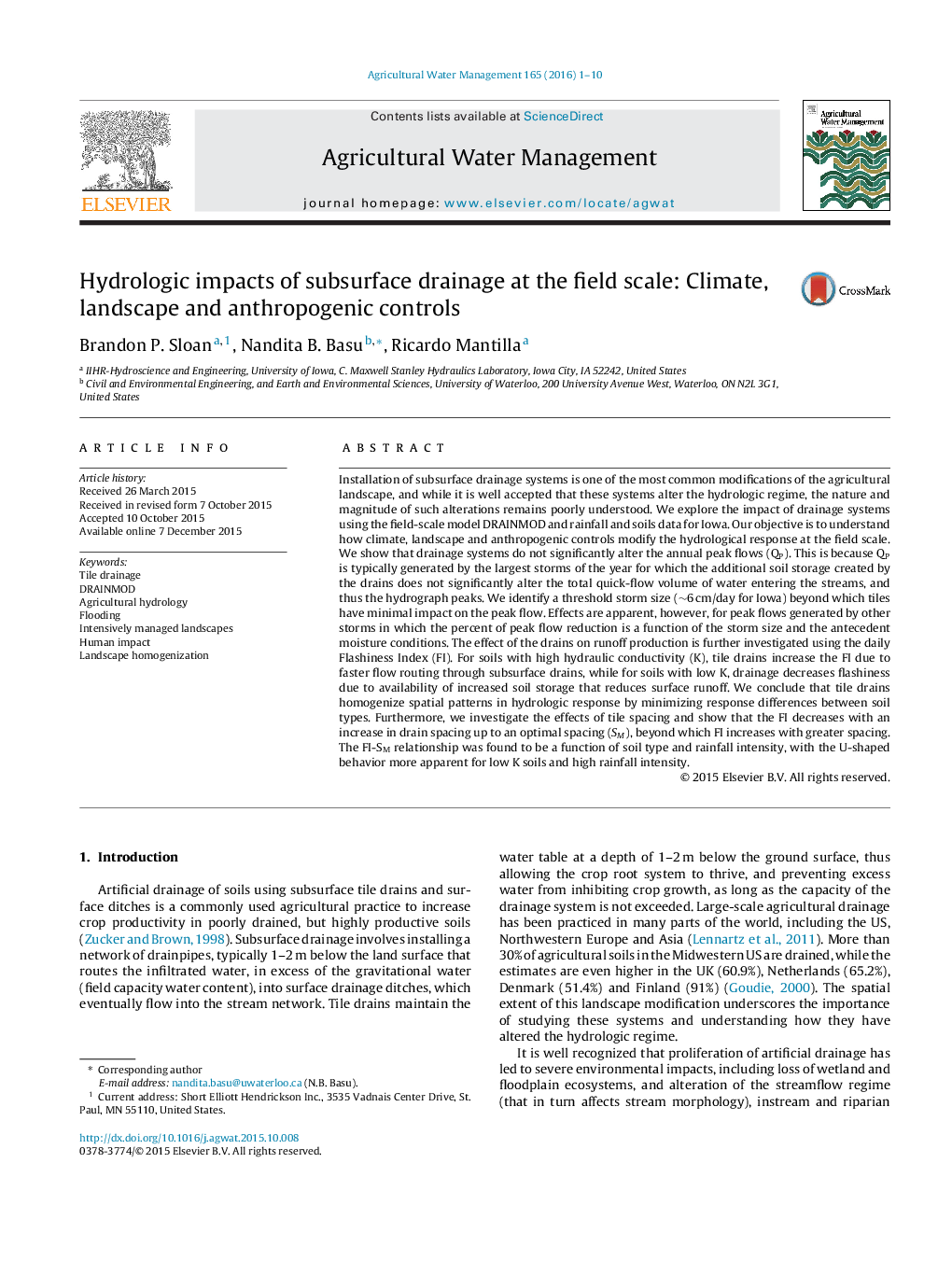| کد مقاله | کد نشریه | سال انتشار | مقاله انگلیسی | نسخه تمام متن |
|---|---|---|---|---|
| 4478295 | 1622915 | 2016 | 10 صفحه PDF | دانلود رایگان |
• We studied field-scale hydrologic impacts of tile drains using the model DRAINMOD.
• Climate, landscape and anthropogenic controls on hydrologic response were evaluated.
• Tiles did not impact mean annual peakflows, or flow events >6 cm/day for Iowa soils.
• Tiles homogenize hydrologic response by minimizing response differences among soils.
• Flashiness is a function of tile spacing with an optimal spacing that minimizes it.
Installation of subsurface drainage systems is one of the most common modifications of the agricultural landscape, and while it is well accepted that these systems alter the hydrologic regime, the nature and magnitude of such alterations remains poorly understood. We explore the impact of drainage systems using the field-scale model DRAINMOD and rainfall and soils data for Iowa. Our objective is to understand how climate, landscape and anthropogenic controls modify the hydrological response at the field scale. We show that drainage systems do not significantly alter the annual peak flows (QP). This is because QP is typically generated by the largest storms of the year for which the additional soil storage created by the drains does not significantly alter the total quick-flow volume of water entering the streams, and thus the hydrograph peaks. We identify a threshold storm size (∼6 cm/day for Iowa) beyond which tiles have minimal impact on the peak flow. Effects are apparent, however, for peak flows generated by other storms in which the percent of peak flow reduction is a function of the storm size and the antecedent moisture conditions. The effect of the drains on runoff production is further investigated using the daily Flashiness Index (FI). For soils with high hydraulic conductivity (K), tile drains increase the FI due to faster flow routing through subsurface drains, while for soils with low K, drainage decreases flashiness due to availability of increased soil storage that reduces surface runoff. We conclude that tile drains homogenize spatial patterns in hydrologic response by minimizing response differences between soil types. Furthermore, we investigate the effects of tile spacing and show that the FI decreases with an increase in drain spacing up to an optimal spacing (SM), beyond which FI increases with greater spacing. The FI-SM relationship was found to be a function of soil type and rainfall intensity, with the U-shaped behavior more apparent for low K soils and high rainfall intensity.
Journal: Agricultural Water Management - Volume 165, February 2016, Pages 1–10
